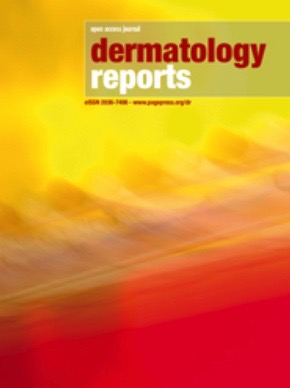Dermoscopy of kaposiform hemangioendothelioma: a case report
All claims expressed in this article are solely those of the authors and do not necessarily represent those of their affiliated organizations, or those of the publisher, the editors and the reviewers. Any product that may be evaluated in this article or claim that may be made by its manufacturer is not guaranteed or endorsed by the publisher.
Authors
Kaposiform hemangioendothelioma (KHE) is a rare vascular tumor of infancy, characterized by an infiltrative, firm, and ill-defined plaque that may be associated with Kasabach-Merritt phenomenon. While the diagnosis is primarily clinical and histopathological, dermoscopy may provide valuable insights into its microstructural features. We present the case of a newborn with congenital KHE involving the lumbar and right gluteal region, focusing on its dermoscopic characteristics. The lesion exhibited a homogeneous, grayish-blue background with no discernible vascular structures, a feature that may aid in differentiating KHE from other vascular tumors. The findings contribute to the understanding of dermoscopic patterns in KHE, highlighting its potential role in early diagnosis.
How to Cite

This work is licensed under a Creative Commons Attribution-NonCommercial 4.0 International License.








